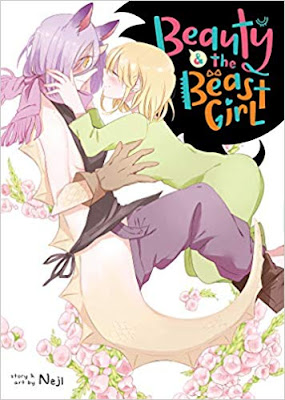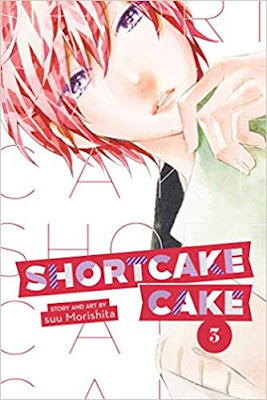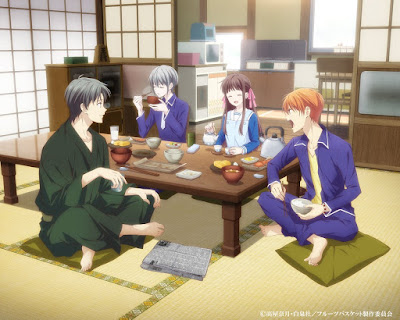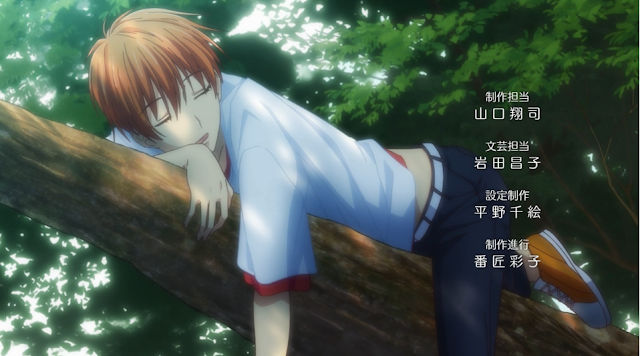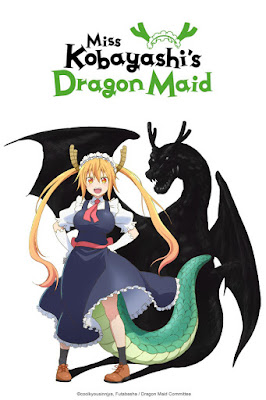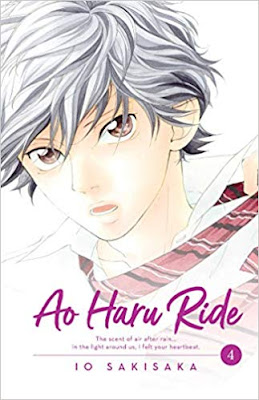I'm late to the party watching Mysterious Girlfriend X, released in 2012, but judging from the Crunchyroll reviews, people really liked it, so I figured I'd give it a try. This has to have one of the grossest premises ever and it manages to make the gross premise look even more disgusting in execution. That being said, the show had some interesting moments, but on the whole, it was strange and servicy.
The story starts when Tsubaki notices that his new classmate, Urabe, has drooled on her desk. When she leaves, he decides - for some godforsaken reason - to stick his finger in her puddle of saliva and then put it in his mouth. From there, they are bonded and they end up having a very strange relationship based on communicating their deepest feelings by sampling each others spit. But not in a good way, not by kissing or anything else. No, by sticking their fingers in their mouths, pulling out what looks like ectoplasm (but is supposed to be saliva) and then sticking it in the other person's mouth causing the second person to feel the things the first person was experiencing. Or something.
The spit itself is almost yellow/green, not clear like most people's, and thick, and always stringing out of their mouths. It is the most un-appealing look they could have given it. But yet, the show isn't totally a lost cause.
As I watched it more, I realized that it's more or less a critique on how stupid teenage boys are, how they think with something other than their brains, and the basic effects puberty has on messing with their heads while also understanding just how naive they really are. In that respect, it's actually an occasionally funny, occasionally observant satire on puberty as well as perhaps a commentary on shounen/seinen anime in general. At least, I'd like to think it was trying to make some valid points in that regard.
The first episode starts with a lot of euphemistic sexual imagery and innuendo along with an opening monologue about a young boy learning about sex for the first time. At first, this is sort of jarring and unnecessary, but in the context of the whole show, actually serves to set up the show's purpose, which again, I think, is an exposition on the idiocy of male puberty.
As for characters, Tsubaki is your basic everyday shounen-ish hero. He's average in school, he's average looking, he's more or less nice, he's an everyman that the male audience is supposed to identify with. He's boring, and stupid, and thinks with his crotch, but is also too shy and too naive to actually know how to respectfully deal with his feelings so he rarely acts on anything either.
Urabe on the other hand, is actually a bit interesting. When we first meet her, my impression was she might be some sort of demonic manic-pixie or something, and at first, we really think she's insane (great scene of her laughing in the classroom then destroying the teacher in the way she brushes off his concern). The scissors she keeps in her underwear (which entails plenty of service) along with the way she uses them to nearly kill Tsubaki through her martial-arts-esque paper cutting, are actually fairly well executed gags and keep her interesting. As we get to know her more, there are subtler sides to her, where she may be masking much of her own insecurity and fears with a fierce and demonstrative approach. It's also possible to read into some potentially dark history with her, although in the anime it isn't expanded at all, so I'm wondering if the manga has more?
Each episode is about one more step to their advancing relationship and Tsubaki's inability to articulate himself in a useful way. He has strange dreams where he imagines what he'd like to be doing with Urabe, and Urabe seems to be able to tell what he's been thinking. We get a sense that she's both empowered and embarrassed by her effect on him. Again, she's intriguing, he's just horny but bland. Their dynamic is best exemplified, and serves the best comedic moments, when he can't quite contain/restrain himself anymore and gives her a spontaneous "hug." Each time, she whips the scissors out of her pants, and proceeds to render any object he's holding into the most precisely destroyed little slivers. When done, and he's thoroughly shocked that he wasn't actually killed by her lighting scissor moves, she reminds him gently not to do that without asking. Yay for affirmative consent!
Some of the episodes early on, were fairly interesting and entertaining, but the show gets to some stupid places near the end that really drag down the last third of the series. A particular arc with a past crush of his gets to some places that can only exist to provide fan service, and go beyond the somewhat valid moments of the earlier episodes.
One of the interesting things in the series is watching how Urabe changes over time. It's small and subtle, but important and is highlighted by the way she ultimately opens up (slightly) to another girl in the class. However, they then add a drool sucking relationship between these two as well. And I know I haven't talked about it in a few paragraphs, but it is drawn so disgustingly, and multiple times per episode, that it really hurts the watchability of the show.
In addition to that friendship, we watch as Urabe opens up to Tsubaki more and more, and reveals that although she's been keeping him at arms length, that she does actually desire physical contact with him. It's a new side to her, and it's clear she wants to connect with him and for them to understand each other. Couple this with an increasing amount of random chit-chat between them as the episodes go on, and we really get the sense that they have a true relationship with each other. She seemed cold, clinical, and weird at first, but over time, Urabe becomes a more well-rounded, or at least relatable, character (while still preserving the fantasy aspects of her characterization designed to appeal to the shounen audience).
On the other hand, as the episodes go on, and into that final arc with Tsubaki's middle-school crush, his stature fades. He goes from being someone who is bland, but tolerable, and maybe worthy of Urabe, to being a typical ass. When his crush appears, we find that he is so easily swayed into doing things for her that he knows will hurt Urabe and their relationship, that it becomes hard to want Urabe and Tsubaki to stay together and keep progressing. As mentioned earlier, this arc has some of the worst writing and scenes in it, and way too much service in its resolution.
Thankfully, after a bad set of episodes (10-12), the final episode has some redeeming value and again shows us some new sides to Urabe that feel natural given the progression of her character throughout. It's a good ending for the show and keeps the whole show from ending on a bad taste from the prior arc.
The art has a retro-ish shounen quality to the character designs, especially evident in Tsubaki's older sister's look. Otherwise it's pretty run of the mill animation. The dream sequences have a lot of CGI which sort of works for the dreams, but it always pulls me out when CGI is combined with what looks more like hand-drawn animation, so I didn't really like it.
Basically, there are some interesting observations and lessons about the steps of relationships and puberty in general, some great character development with Urabe, but it's mixed with a gross premise that won't go away (the drool sucking) and a bland/stupid/unlikable (by the end) male character in Tsubaki. It was almost interesting to watch, but you need a strong stomach (for the drool) and a lot of tolerance for service (panty shots, big boobs) to get to the value. I'm giving it a iffy 5.5/10, but I certainly wouldn't suggest this one outright.
✩🚺


